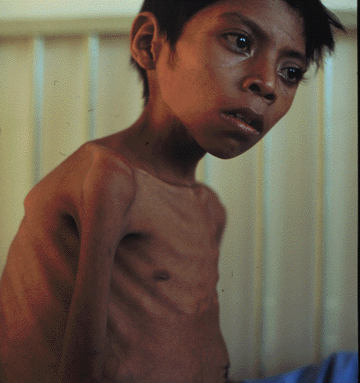
Going GREEN iSCHOOL
An Advocacy Promoting Environmental Health and Sanitation in School
The air we breathe is essential for our survival. However, diseases can be acquired through air inhalation due man reasons like industrialization, air pollution, poor hygiene and sanitation. Common and rare infectious diseases that are air related are compiled in this section. This is to allay information about airborne diseases, its proper management and ways on how to prevent it.
Air Related Diseases
Bird flu or Avian Influenza is a contagious disease of birds ranging from mild to severe form of illness. The outbreaks affecting some Asian countries caused by influenza A/H5N1 virus may also cause severe infection in humans. Bird Flu is transmitted to humans through inhalation or contamination with infected discharges or feces of sick chicken.
Chicken pox is caused by varicella virus. The mode of transmission is person to person bu direct contact, droplet or air borne spread of fluid or secretion from persons with chicken pox. The virus is contagious 5 days before and 5 days after the appearance of blisters.
Influenza is caused by Influenza virus (A, B, or C) that enters int the respiratory tract via droplets from an infected person through coughing, talking and sneezing. It is also transmitted through contact with the surfaces, material and clothing contaminated with discharges of an infected person.
Diphtheria is a bacterial (toxin-related) disease. It is an acute pharyngitis, acute naso pharyngitis or acute laryngitis with a pseudomembrane formation in the throat.
Infectious Agent: Corynebacterium diphtheria
Measles is a viral disease which is highly communicable with the history of the following:
Generalized itchy rash which lasts for 3 or more days
Fever above 38C or hot to touch
And any of the following ( cough, runny nose, red eyes or
conjunctivitis
It is transmitted via droplet spread from person to person caused by sneezing, coughing and close personal contact.
This is a disease brought about by spread of the bacteria (Neisseria Meningitides) to blood stream causing evere signs and symptoms that may lead to death. Meningococcemia is transmitted via direct contact with discharges fromt he nose and throat of an infected person. It can also be spread through coughing, sneezing, kissing, sharing of foods, drinks and utensils.
Pertussis is a bacterial (toxin-related) disease whereby there is a history of severe cough and history of any of the following:
Cough persisting 2 or more weeks
Fits of coughing
Cough followed by vomiting.

Asthma
Asthma is a respiratory disease caused by triggers from the environment such as pollen, dust, smoke or any type of air pollutants. It causes repeated episodes of wheezing, breathlessness, chest tightness and nighttime or early morning coughing.
Tuberculosis is a bacteria disease. It has the following signs and symptoms manifested by an ill child:
- A history of contact with a suspect or confirmed case of pulmonary tuberculosis.
- Any child who does not return to normal health after measles or whooping cough.
- Losses weight, cough and wheeze which does not respond to antibiotic therapy for acute respiratory disease
- Abdominal swelling with a hard painless mass and free fluid
- Painful firm or soft swelling in a group of superficial lymph nodes
- Any bone or joint lesion of slow onset
- Signs suggesting meningitis or disease in the central nervous system

Bronchiolitis

Tuberculosis
Bronchiolitis is caused by Respiratory Syncitial Virus or RSV that infects the lungs and breathing passages. RSV is a viral disease that can lead to health problems especially among young children and older adults.
Pneumonia is an infection of the lungs that can cause mild to severe illness in people of all ages. Signs include coughing, fever, fatigue, nausea, vomiting, rapid breathing or shortness of breath, chills, or chest pain. It is caused by a bacteria known as Streptococcus pneumoniae.










